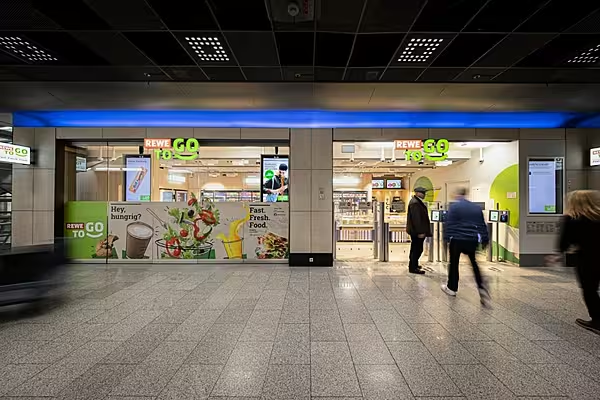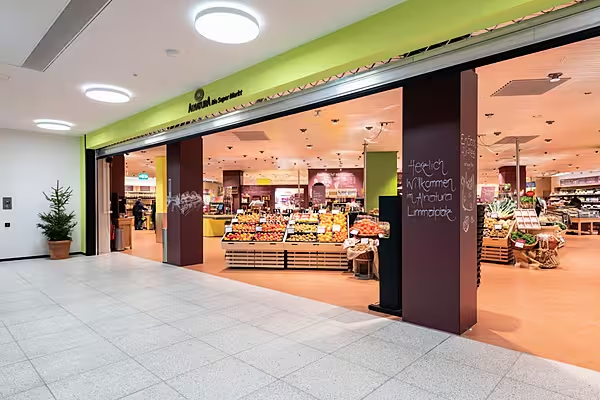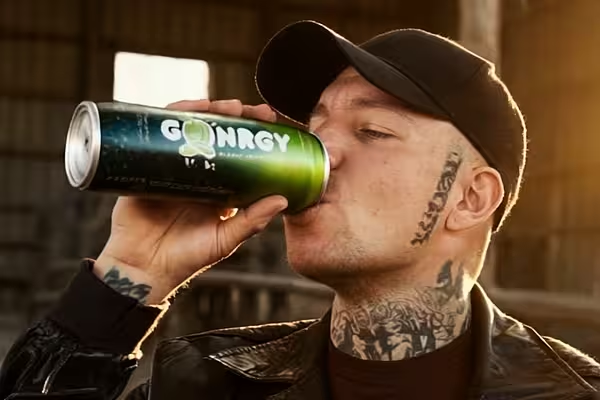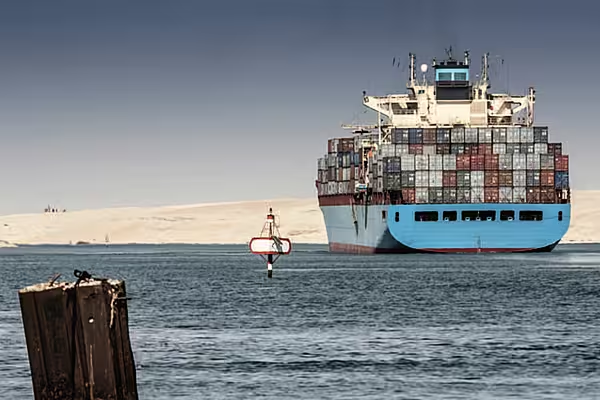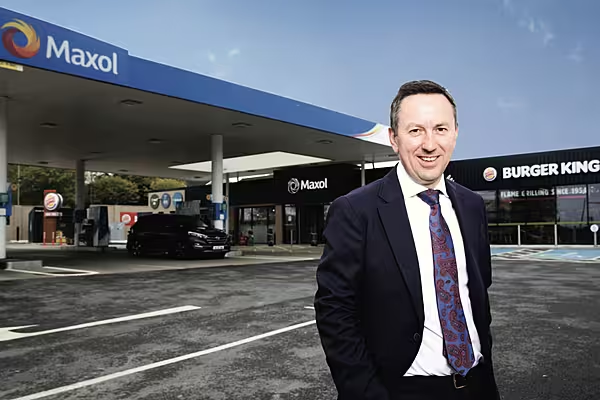Delivery Hero has confounded the quick-commerce naysayers by recently turning a profit, with its grocery business a key driver of this growth. ESM caught up with Milena Lazarevska, the firm's global senior vice president, quick commerce. This article first appeared in ESM's September/October 2023 edition.
During the pandemic, the quick-commerce sector was the darling of the venture capital market, with countless millions thrown at start-ups pledging 15-minute deliveries, with minimal delivery charges, on baskets with as few as one or two items.
As one operator told this magazine in early 2021, “You actually don’t need to have a fridge because anything can be delivered to your door.”
However, when the funding started to dry up last year, the cash-intensive business models on which many start-ups were founded were waning, and the industry consolidated in quite a rapid fashion, culminating in Getir’s swoop for Gorillas last December, combining two of the biggest names in this nascent industry. Since that move, Getir itself has been rapidly downsizing, recently announcing its withdrawal from Italy, Spain and Portugal and cutting its workforce in search of profitability.
To paraphrase author Mark Twain, however, the rumours of quick commerce’s demise may have been greatly exaggerated.
Positive Outlook
Last month, Germany’s Delivery Hero – which itself made one of the biggest acquisitions in quick commerce’s short history with its takeover of Glovo last year – raised its full-year revenue outlook, as it recorded a profit in the first half of its financial year. This was a marked improvement on its €323 million loss in the corresponding period in 2022, while gross merchandise value (GMV) rose by 8% – double the 4% previously anticipated by the company.
One of the driving factors of Delivery Hero’s growth was its Integrated Verticals segment, which includes its DMart quick-commerce grocery business, which reported a 26% increase in GMV (swinging to a quarterly profit for the first time), driven by ‘healthy volume growth, larger shopping baskets and improved cost efficiency,’ the company noted in a statement.
As Milena Lazarevska, global senior vice-president of quick commerce at Delivery Hero, tells ESM, the growth seen in the most recent quarter might not be on a par with the rapid acceleration seen during the pandemic, but, given the challenges facing many quick-commerce operators over the past year, it’s an encouraging sign.
“I think COVID did us both a service and a disservice,” Lazarevska says. “It was a crazy time for the industry. About a year and a half ago, we did an internal transition to focus on profitable growth – not just on growth.”
Business Model
It’s an approach that seems to be working. Delivery Hero operates some 980 warehouse-style dark stores in ‘strategically relevant’ locations around the world – boasting a presence in some 70 countries – accounting for approximately half of its grocery-focused operations.
The remainder is comprised of a marketplace-type operation, wherein it partners with retailers such as Carrefour, Kaufland Romania, Middle Eastern retailers Lulu and Choithrams, and a variety of other large operators, delivering on their behalf.
“We are seeing growth in both business models,” says Lazarevska. “We offer approximately 6,000 items from our dark stores, on average. A supermarket stocks 20,000 items. Therefore, we can provide a substantially greater choice to our customers through our marketplace model as well.”
From its outset, Delivery Hero sought to present a broader grocery offering than many other quick-commerce players – “A lot of our competitors stayed in that 1,000- or 2,000-item offering, which is mostly snacks and drinks”, says Lazarevska – which has enabled the business to achieve economies of scale.
In addition, it has consolidated its network, reducing its store count by around 15%, year on year (with a further 50 stores to close in the third quarter), leading the business to pivot away from super-fast delivery to focus on bigger baskets.
“Each store now serves a much larger catchment area,” says Lazarevska. “We no longer aim for 15-minute delivery, by any means. This means we can handle many more orders in every store and spread the costs better, getting sufficient density within each store to justify the higher operational expenses.”
As a result, Delivery Hero has confidence in the quick-commerce operating model, although Lazarevska admits that it is working better in some markets than in others – Asia, for example, was a market that helped the business “turn the tide” in the most recent quarter.
“Europe is still a challenging market,” she says. “Customer preferences are a little bit different, and there’s also a huge network of convenience stores and supermarkets in city centres that people can walk to very easily as well. We are improving significantly in Europe, but we have a smaller footprint here. It’s a much different story in the Middle East, Korea or Latin America, where this model is really, really working.”
Read More: Delivery Hero Confirms Talks On Partial Sale Of Asian Business
Learning Through Acquisitions
Delivery Hero has been one of the most prolific quick-commerce operators, in terms of acquisition activity, in recent years. Aside from the aforementioned Glovo takeover, other purchases include InstaShop in Dubai, Woowa Bros in Korea, Yemeksepeti in Türkiye, Ekioskys in Greece, and its recent takeover of HungerStation in Saudi Arabia, which it finalised in July of this year.
According to Tracxn, which monitors M&A activity for the venture capital market, to date, the business has made 28 acquisitions as it has expanded around the globe.
As Lazarevska explains, while this has obviously had geographical benefits, it has also led to the integration and adoption of new technologies that have furthered the business as a whole.
“We actually see our global scale as an advantage to the ability to learn across the globe,” she explains. “Maybe Asia tends to be ahead, in general, but there has also been some really cool innovation that has come out of Latin America and from the Middle East. We pick a couple of focus markets, really develop a technology there, or a new offering there, and then once we have the playbook ready, globalise it across all of our markets.”
In the case of Hunger Station, for example – in a country that, historically, has had low e-commerce penetration – Delivery Hero has the opportunity to learn “how to effectively serve customers who shop with much larger baskets than in most other countries, and how we can improve our quick-commerce model to cater for that sort of customer?”
Private-Label Development
While, thus far, the company has largely relied on a branded offering, private label is increasingly coming to the fore, with Delivery Hero now boasting a burgeoning store brand offering in Singapore, Malaysia, and other Asian-Pacific markets.
“We are starting to develop that offer in the Middle East as well, and I would imagine it will continue to expand in select categories,” says Lazarevska.
“It really depends, market by market. Europe is, again, an outlier, where supermarkets have maybe 50% or 60% of their sales through private label. In Asia, MENA and Latin America, it’s not like that – we’re talking single-digit contributions.”
While she expects the Delivery Hero private-label offering to remain relatively small in the short-to-medium term – focusing on cheaper, more affordable products – “[it will] certainly help our offering and our bottom line because these products tend to be higher margin.”
Future Growth
As regards the future? While Delivery Hero has now ‘reached several major milestones on its path to profitability’ – as it noted in its half-year report – growth is likely to be much more methodical, going forward, with the tendency for rapid expansion now firmly rooted in the past.
“We’re aiming for much more like-for-like growth from the same portfolio,” says Lazarevska, “as we have lots of consumers that are covered by a particular store that haven’t yet discovered us.
"However, what we have also developed over the past years, which we didn't have when we started, is the technology that lets us more accurately identify areas in a city where we have customers, but we don’t yet have coverage. So, maybe we can open another store or extend the delivery of existing stores.
“This is something we’re doing in a much more surgical way, rather than the very fast growth that we saw during COVID times.”
To put it another way, while quick commerce has been on the ropes recently, there are still plenty of rounds left to fight.

